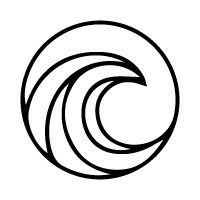Introduction
Bodyboarding, a vibrant and dynamic water sport, continues to enthrall wave enthusiasts around the globe. This exhilarating sport, distinct from traditional surfing, requires not just dexterity and passion but also the right gear. The cornerstone of this aquatic adventure is the bodyboard, a sophisticated tool that bridges the rider with the ever-changing dynamics of the ocean.
The Crucial Role of Selecting the Best Bodyboards
In the world of bodyboarding, selecting the right board is crucial. The ideal bodyboard serves as an integral extension of the rider, adeptly converting the ocean's raw power into exhilarating experiences of catching waves. Our comprehensive guide to best bodyboards for 2024 is meticulously crafted to help you find the perfect board, uniquely suited to your bodyboarding aspirations and wave-catching adventures.

- Understanding the Difference: Distinguishing between a bodyboard and a boogie board, each catering to different styles and experiences.
- Core Materials: Investigating how varied materials like EPS cores and polypropylene cores influence the board's buoyancy, flexibility, and durability.
- Sizing Guide: Offering insights on selecting the right bodyboard size, and aligning with individual height, weight, and skill level.
This guide is not just about choosing a board; it's a deep dive into the essence of bodyboarding, catering to every enthusiast from the novice making their first venture into the waves to the advanced rider seeking sophisticated performance and maneuverability.
Embark with us on this comprehensive journey to master the waves, as we explore how we unveil the secrets to selecting the best bodyboards of 2024, where quality, innovation, and the pure thrill of bodyboarding converge.
Understanding the Difference: Bodyboard vs Boogie Board

Bodyboarding and boogie boarding are often used interchangeably, but they have distinct origins and purposes that set them apart. Both sports share the thrill of riding waves on bodyboards, yet they cater to different styles and experiences.
Bodyboards, the core equipment in bodyboarding, have a rich history. They were initially crafted to offer a more immersive wave riding experience. These boards are typically shorter, broader, and more flexible, designed to give riders better control and maneuverability on the waves. The construction of bodyboards allows for a variety of riding styles, including prone, drop knee, and even stand-up riding.
On the other hand, boogie boards were popularized as a more accessible and fun way to enjoy the ocean. The term "Boogie Board" is actually a brand name that became synonymous with a certain style of bodyboards. Boogie boards are usually made of softer, more buoyant materials and are often considered as the entry-level option for wave enthusiasts. They are perfect for casual wave riding and are particularly popular among children and beginners.
Key distinctions between the two include:
- Design: Bodyboards are engineered for performance, featuring sleeker designs and materials like high-density polyethylene (HDPE) or polypropylene (PP) cores. Boogie boards, while also using similar materials, tend to have a more basic design and construction.
- Purpose: Bodyboarding is often pursued as a serious sport, with riders exploring various techniques and maneuvers. Boogie boarding, in contrast, is more about the fun and joy of being in the water and is less technique-intensive.
Understanding these differences is crucial in selecting the right board, whether you're aiming for high-performance bodyboarding or a fun day at the beach with a boogie or paddle board.
The Importance of Core Materials in Bodyboards

The core material of a bodyboard significantly influences its performance, durability, and suitability for various wave conditions and rider proficiency levels. The two most common materials used for bodyboard cores are polyethylene (PE) and polypropylene (PP), each offering distinct characteristics.
Polyethylene (PE) Cores:
Often referred to as Dow or PE cores, these are softer and more flexible. PE cores are excellent for cooler water as they maintain their flexibility. They provide a smoother ride and are often favored by riders who prefer a more fluid style and those who enjoy riding in conditions where the waves are less powerful. PE cores are also a good choice for beginners due to their forgiving nature.
- Suitability: Ideal for cold water and for riders who prefer a flexible board for smoother turns.
- Riding Style: Best for fluid, flowing riding styles in moderate wave conditions.
Polypropylene (PP) Cores:
Also known as Beaded Polypropylene, PP cores are stiffer and lighter than PE cores. They offer better projection off waves and are more responsive, making them suitable for warmer water conditions where they won’t become too rigid. PP cores are often chosen by advanced riders who seek more speed, control, and high-performance on larger, more powerful waves.
- Suitability: Optimal for warm water and for riders looking for speed and high-performance.
- Riding Style: Ideal for aggressive riding and executing sharp turns and aerial maneuvers.
Matching Core Types with Wave Conditions and Rider Proficiency:
- Beginner Riders: A PE core is often recommended for its flexibility and ease of control.
- Intermediate to Advanced Riders: PP cores are better suited for those who want to push their performance, especially in warmer waters and more challenging wave conditions.
- Wave Conditions: For colder, less powerful waves, PE cores offer comfort and ease. In contrast, PP cores excel in warm water and powerful, larger waves.
Understanding the differences between these core materials and matching them to suit your local wave conditions and riding style is crucial in choosing the best bodyboard for your needs. This knowledge ensures that you get the most out of your bodyboarding experience, whether you're just starting or are a seasoned rider looking to enhance your wave-riding skills.
Choosing the Right Size: A Bodyboard Sizing Guide

Selecting the correct bodyboard size is essential for performance and comfort, and it depends on the rider's height, weight, and skill level.
Key Considerations for Sizing:
- Height: The board should reach up to your belly button when standing on the end.
- Weight: Heavier riders should opt for wider boards for better flotation, while lighter riders can go for narrower boards for better control.
- Skill Level:
- Beginners: A larger board for stability and easier wave catching.
- Intermediate Riders: A more fitted board for improved control.
- Advanced Riders: A smaller, agile board for advanced maneuvers.
Quick Sizing Tips:
- Board Length: Generally, measure from the chin to the knees, adjusting based on weight and experience.
- Board Width: Wider for stability, narrower for speed and maneuverability.
- Wave Type: Larger boards for small waves, smaller boards for larger waves.
By considering these factors, you can choose a bodyboard that suits your physical attributes and skill level, enhancing your bodyboarding experience.
Features to Look for in Kids’ Bodyboards: Ensuring Safety and Fun

When selecting bodyboards for young enthusiasts, it's essential to focus on features that ensure both safety and enjoyment. Here are key aspects to consider for ensuring you choose the highest quality bodyboards for kids:
Safety and Durability
- Robust Construction: Look for boards made with high-density foam that can withstand rough handling and frequent use.
- Leash: A sturdy leash is crucial for safety, keeping the board attached to the child at all times.
Size and Weight
- Appropriate Size: The board should be proportional to the child's size, generally reaching their waist when standing upright.
- Lightweight: A lighter board is easier for a child to carry and maneuver in the water.
Design and Comfort
- Contoured Deck: Provides better grip and comfort for the child's body.
- Bright Colors and Designs: Attractive to kids and enhance visibility in the water.
Performance Features
- Rocker: A slight curve in the board helps prevent nose-diving and makes it easier to catch waves.
- Rail Configuration: Look for a board with softer rails for easier turning and control.
Selecting the Best Boards for Young Riders
- Brand Reputation: Choose brands known for producing the highest quality bodyboards, ensuring reliability and performance.
- Skill Level: Consider the child's experience – beginners may benefit from a more basic, stable board, while more advanced young riders might prefer boards with better performance features.
By prioritizing these features, you can confidently choose a fun, safe, and top-quality bodyboard for your young rider.
Finding the Right Boards: Criteria for the Highest Quality Bodyboards

Selecting a top-performing bodyboard requires a careful evaluation of several key factors. Here's a concise guide to help you identify the highest quality bodyboards:
Core Material and Construction
- High-Quality Cores: Look for polyethylene (PE) or polypropylene (PP) cores for durability and performance.
- Construction Integrity: Ensure the board is well-constructed with robust seams and finishes.
Board Features and Performance
- Board Shape: Tailor the shape to your riding style – crescent tails for control, bat tails for lift.
- Rail Configuration: Choose 60/40 or 50/50 rails for a balance between speed and control.
Top Recommendations for Quality Bodyboards
Bom Bora 39"/41" Bodyboard

The Bom Bora 39"/41" Bodyboard, with its robust EPS core and XPE deck, is perfect for both beginner and intermediate surfers seeking agility and precision in wave riding. Its size variability and contoured design ensure a balanced and controlled surfing experience, making it a top choice for wave enthusiasts.
Bom Bora 38" Elite Bodyboard

The Bom Bora 38" Elite Bodyboard, with its lightweight EPS core and IXPE deck, is designed for surfers at all skill levels, offering superior strength, buoyancy, and grip. Its HDPE slick bottom ensures smooth gliding, making it an ideal choice for those seeking to elevate their wave-riding experience.
Bom Bora 42" Elite Bodyboard - Black/Orange

The Bom Bora 42" Elite Bodyboard in Black/Orange offers an elite wave-riding experience with its lightweight EPS core, dual power stringers for structural integrity, and a high-grade IXPE deck. Perfect for beginner to intermediate surfers, it combines durability with dynamic performance, featuring mesh-enhanced HDPE slick bottom and precision channel grooves for superior control and maneuverability.
By focusing on these critical aspects, you can confidently select a bodyboard that stands out in quality, performance, and reliability, ensuring you create a superior wave-riding experience.
Maintaining Your Bodyboard: Essential Care and Storage Tips

Proper maintenance is key to prolonging the life of your bodyboard. Here are succinct tips to keep your board in top condition:
Regular Cleaning
- Rinse Thoroughly: After each use, rinse your board with fresh water to remove salt and sand.
- Gentle Cleaning: Use mild soap and a soft cloth for deeper cleaning, avoiding harsh chemicals.
Storage Guidelines
- Avoid Direct Sunlight: Store your bodyboard in a cool, shaded area to prevent heat damage.
- Proper Positioning: Keep the board flat or on its side, avoiding bending or folding.
Routine Checks and Repairs
- Inspect Regularly: Look for dents, delamination, or seam splits.
- Prompt Repairs: Address any damage quickly, using appropriate repair kits or professional services.
By adhering to these simple yet effective care and storage guidelines, you can ensure your bodyboard remains in excellent condition, ready for your next ride or next wave adventure.
Conclusion:
Our journey through the world of bodyboarding has provided you with a range of key insights for choosing and maintaining the best bodyboards. We've navigated through the nuances of differentiating bodyboards from boogie boards, selecting the ideal size and core material, and the importance of proper care and storage.
Whether you're embarking on your first wave or are a seasoned enthusiast, the right bodyboard is instrumental in enhancing your experience. Bodyboarding is not just a sport; it’s an adventure, a way to connect with the ocean's rhythm.
Frequently Asked Questions
How Do You Pick a Good Quality Bodyboard?
To choose a high-quality bodyboard, consider the following:
- Core Material: Polyethylene (PE) for cooler waters and flexibility, Polypropylene (PP) for warmer waters and rigidity.
- Size: Match the board size with your height and weight for optimal control and stability.
- Tail Shape: Crescent tails offer better control, while bat tails provide more lift and maneuverability.
- Brand Reputation: Opt for brands known for durability and performance.
What is the Difference Between Bodyboards and Boogie Boards?
- Bodyboards are designed for performance, featuring advanced materials and shapes for various riding styles, including prone and drop-knee.
- Boogie Boards are often seen as entry-level or recreational boards, typically softer and more buoyant, ideal for casual wave riding.
Are You Supposed to Wax a Bodyboard?
Yes, waxing a bodyboard can enhance grip and control. Here's how to do it:
- Clean the Board: Ensure the board is clean and dry.
- Apply Basecoat Wax: For a new board or a clean deck, start with a basecoat wax.
- Top Layer Wax: Apply a top layer of softer wax for added grip.
- Waxing Area: Focus on the areas where your body will contact the board, especially the upper half.
- Regular Maintenance: Re-wax as needed, depending on usage and wear.



